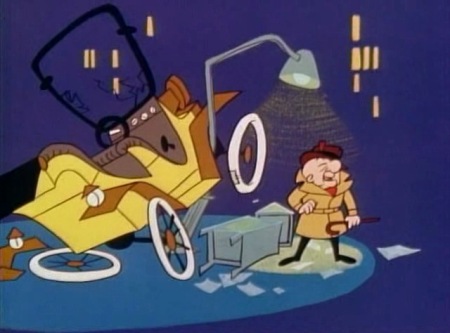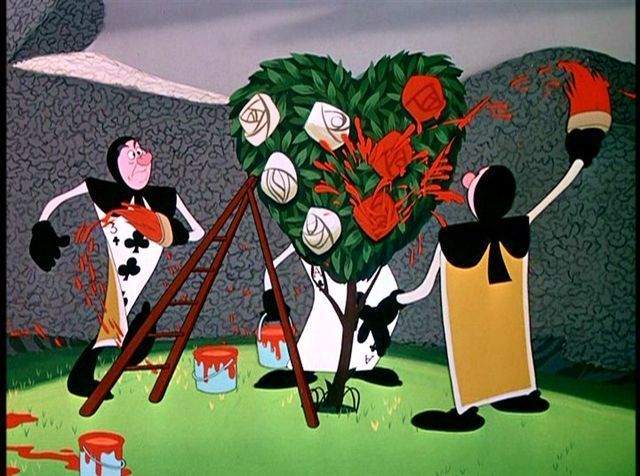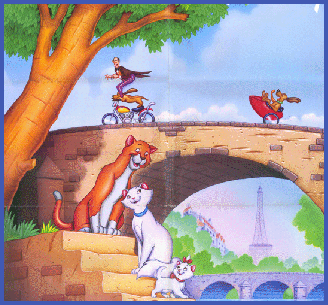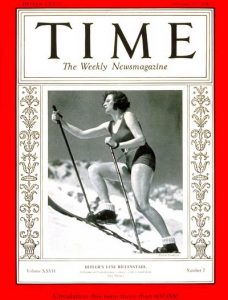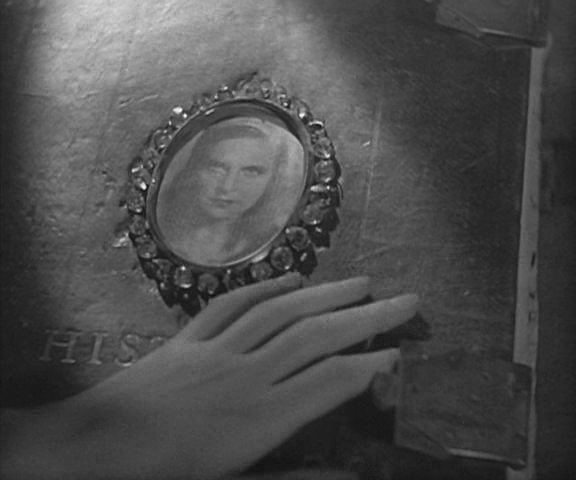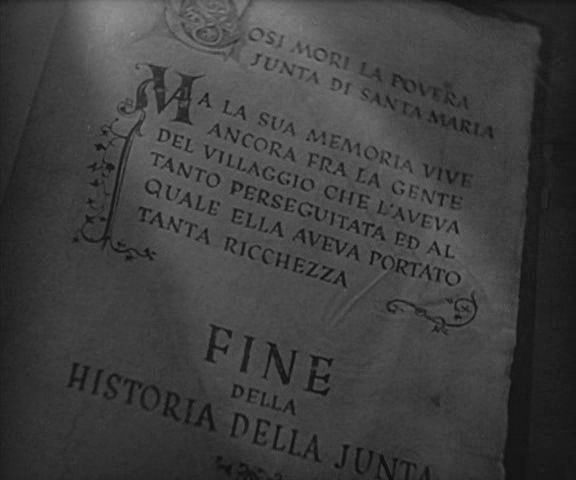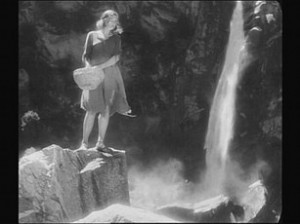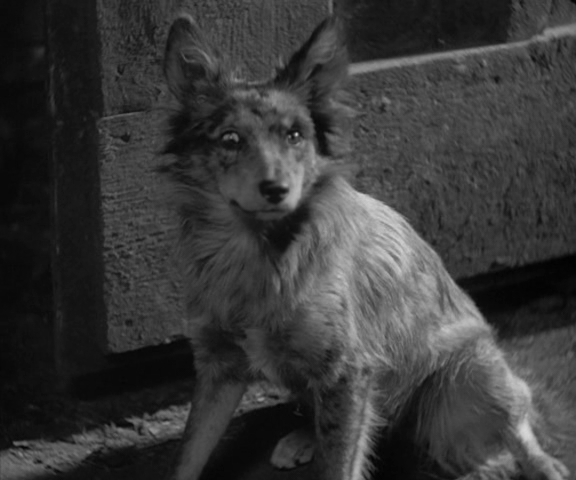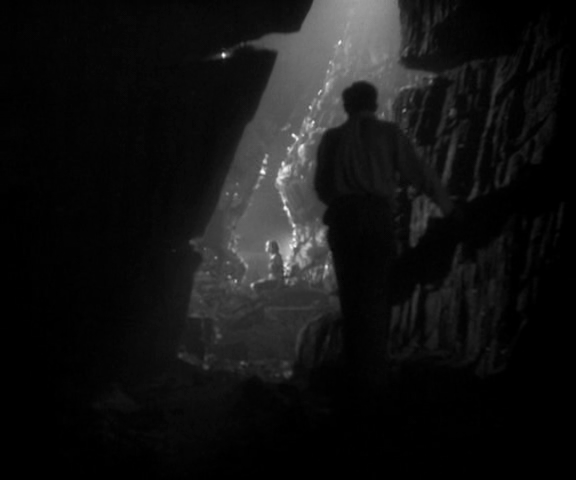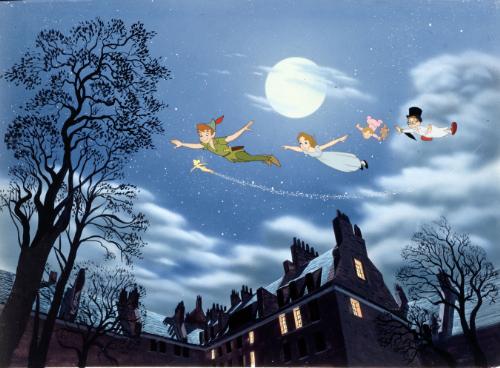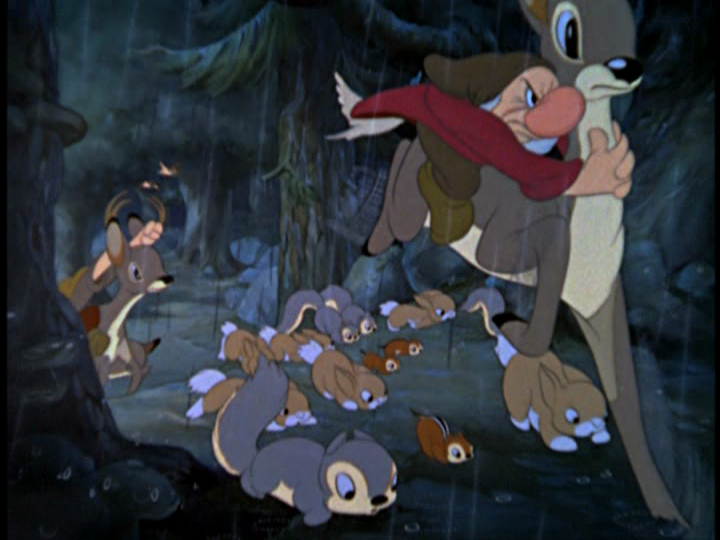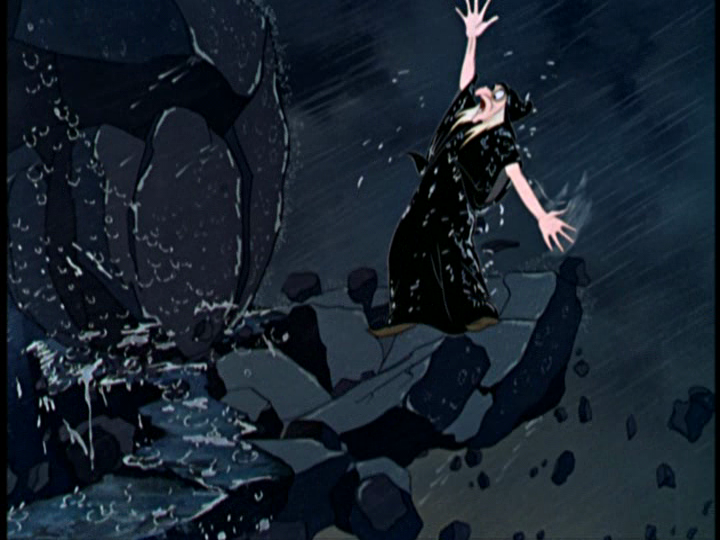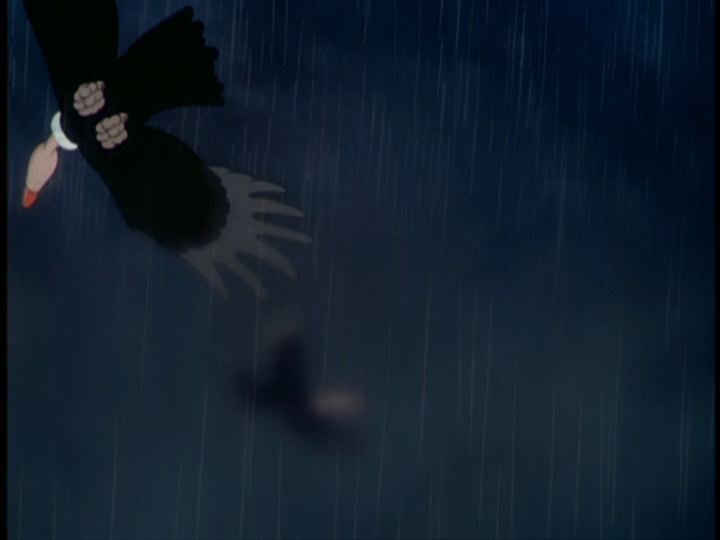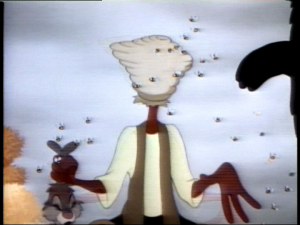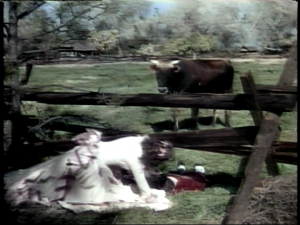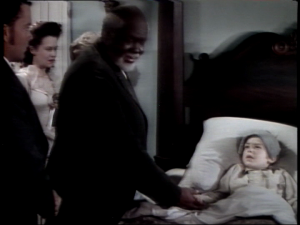From Film Comment (January-February 1975). Although this is obviously dated in many respects, and most likely contains some errors, I’ve made only a few revisions while transcribing it. Given the length, I’ve decided to post this in two parts, with the second part to be posted later today.
This is a much-expanded entry written originally for Richard Roud’s two-volume Cinema: A Critical Dictionary (1980). It was mainly researched while I was still living in Paris in the mid-1970s, and I can recall having had lots of difficulties attending various kids-only screenings of Disney cartoon features, and convincing various theater managers that my interests were strictly scholarly and I wasn’t a dirty old man. — J.R.

In some respects, there may be no cultural figure in the West as potentially controversial as Walt Disney, even though love and hatred for what Disney represents are frequently felt by the same people. At the same time, there is certainly no other filmmaker whose aesthetic and ideological preoccupations have permeated so much of modern life that, paradoxically, his omnipresence verges on invisibility. Even beyond the grave, continuing manifestations of his vision have become some integral to American society that they are commonly regarded as natural and relatively unquestioned parts of the landscape, like a salt shaker or a babysitter or a place to go on vacation. It has been reported that in 1966, the year that Disney died, 240 million people saw at least one of his movies while 800 million read a book or magazine bearing his imprint. One would not be unduly surprised to learn that last year [1974] the figures were even higher. In an uncharacteristically provocative and rather corrosive account of the opening of Disney World in Newsweek (October 18, 1971), Joseph Morgenstern charged that Walt Disney Productions was “nothing more or less than a royalist plot, a computer program to take over the United States and turn it into a continental Magic Kingdom. ”There is reason to suspect that the Disney interests have done more than install an Audio-Animatronic Nixon in the Hall of Presidents here, that the man in Washington is programmed to abdicate in favor of a Disney-designated ruler. “And why not? Who else but Disney has been able to build an American city that works? All the answers are here. […] What works here can work in a larger Magic Kingdom. […] “In Walt we can trust to reform our schools and put history in its proper perspective: an Attica land in which Audio-Animatorinic prisoners sing the praises of Governor Rockefeller for respecting the rights to privacy, a Thinktankland in which Dan Ellsberg takes the Pentagon papers with a grain of salt. In Walt we can trust to clear the slums, renew the cities, wipe out poverty and the balance-of-payment deficit for putting up turnstiles and charging admission to our shores. It is our manifest destiny to become Disneyland to the world.” If Morgenstern’s anger sounds exaggerated, it is worth recalling that many years ago, Ray Bradbury quite seriously proposed to Disney that he run for mayor of Los Angeles. As the story is related, the gray eminence was flattered but uninterested: “Why should I run for mayor,” he said, “when I’m already king?” And indeed, one could hardly blame Disney for his response. Why should he have bothered with trifles like managing a city when to minds all over the country he already came across as the benevolent ruler of the universe? How many of us remember Uncle Walt on television, situated in his cozy study with All the World’s Knowledge and All the Great Literary Classics bound in leather –- the titles lettered in gold, if we had color TV –- presiding benignly over his globe of the world, which he patiently explained and described to us?
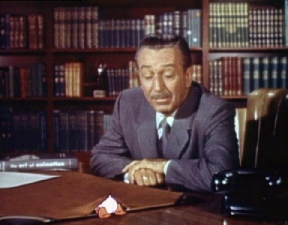

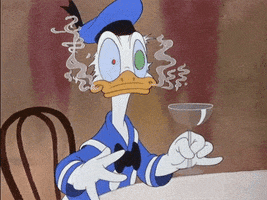
It was and is a strange relationship he had with that globe: not at all like the one that Chaplin had with his own globe in THE GREAT DICTATOR, because it wasn’t subject to easy irony or ridicule – no, it was much too good-natured and paternal for that, too harmless in all of its most obvious implications. Like Mickey Mouse and Donald Duck, whenever and however they appear, it usually makes one smile because it is so cheerfully legible. A critic once remarked to me that much of the continuing excitement of THE GREAT DICTATOR resided in the fact that when Chaplin made it, he was probably more widely known than any other human on the planet, including Hitler. Whether or not this is true, the mind boggles before the likelihood that the non-human and imaginary Mickey Mouse may be even more universally familiar: according to Lewis Jacobs in The Rise of the American Film (1939), “His popularity outranks that of kings and dictators; he is the best-known figure of the twentieth century.” I don’t know whether he has penetrated Red China yet and I hope he never does, but I rather suspect he is likely to get there in some form or another even before Coca-Cola.
All of this is unsettling, awesome, and extremely problematical to deal with, because like it or not -– and most audiences like it – Disney does embody a specific aesthetic intelligence, and for the past thirty years, intellectuals have generally refused to take him seriously on any level at all. A besetting limitation of Richard Schickel’s useful and factually interesting The Disney Version (Avon Books, 1968) is that it virtually dismisses Disney as an artist while pursuing various social implications of his career – as if talent, integrity, and taste were all somehow synonymous and interchangeable. (If one approves of it, it’s art; if one disapproves, it’s mass culture.) And other studies, usually more sympathetic, tend to sing praises to Disney’s “artistry” without seriously acknowledging anything else.
A formidable task faced by any Disney critic is the squaring of art with ideology without distorting the nature or values of either. In the absence of a methodology that can adequately accommodate both aspects, I have limited myself here to a few notes and suggestions, listed under four headings. For the sake of convenience, my range of references has been narrowed to a few of the animated and semi-animated features – not only because these tend to be the best-known works, but also because they appear to be the richest single area for investigation.Unfortunately, the bulk of the early “Silly Symphonies” and many of the features are notoriously difficult to come by, and not having been around for the massive Disney retrospective at Lincoln Center in 1973, I can’t be quite as comprehensive in my use of examples as I’d like to be. A recent Paris revival of SALUDOS AMIGOS, for example, was welcome; but how often nowadays does one get to see THE THREE CABALLEROS outside of, say, Buenos Aires? (An Argentine friend has told me that it is quite popular there, and shown almost perpetually.)
Authorship.No one has ever been able to tackle the slippery matter of assigning Disney precise authorship. On the one hand, the cartoon features exhibit a style that is both unmistakable and all-pervasive: a tree in a Disney film is a Disney tree, a doorknob is a Disney doorknob. On the other hand, Disney was not even capable of duplicating the famous “Disney signature” that appears on the credits of each of his films. Five directors are listed on the credits of DUMBO, six in BAMBI, but the Disney style of animation persists as a recognizable entity even up to the present, regardless of who happens to be working at the studio, and despite the frequent modifications (e.g., the influence of U.P.A. animation in ALICE AND WONDERLAND, and the even flatter greeting-card perspectives in more recent films like THE ARISTOCATS).
In certain respects, the creative relationship between Disney and his films might be seen as roughly equivalent to the one between Hugh Hefner and Playboy; in and above the multiple contributions, the master fantasy of one individual finds a setting for them all, a “perfect” landscape continually rebuilt, redecorated, and elaborated by others — rather like the made-to-order pornography written for the sole consumption of wealthy À Rebours types, except for the crucial fact that Disney and Hefner both have “cross-section” personalities. There are obviously a lot of people around who feel as ambivalent about sex and nature as Disney and Hefner (respectively) do, and experience much the same mixture of worship and fear in regard to both categories. The wholesomeness projected by the worldview of both empires is situated in a porcelain temple of the mind where all notions of waste become magically absent, swept away by water that is kept permanently purified, thanks to beneficent, invisible powers. The categories are thus enabled to maintain their pristine and ideal states: pure idea without the threat of contamination offered by an experience but a vicarious one.
More than one commentator has compared Hefner to Disney, particularly as a businessman with a genius for spin-offs and a capacity to use various products as advertisements for still other products. For those interested in tracing the genealogy of Playboy’s rabbit symbol-logo and its multiple manifestations, it is tempting to recall all the ingenious repetitions of rabbit shapes in the house of the March Hare in ALICE IN WONDERLAND (in the furniture, décor, family portraits, etc.): Disney’s ALICE appeared in 1951, the first issue of Playboy two years later.
A man whose highly ambivalent feelings about art were expressed equally well by the term “Silly Symphony” and by the notorious comment after seeing one of the sequences in FANTASIA (“Gee, this’ll make Beethoven!”) may never have resolved these conflicts – he never really had to – but he certainly knew what he liked. And the Disney style might be described as the putting into practice, by countless employees, of what Disney liked.

Style and vision: a comparison. Perhaps the one word that could best encapsulate this style is idealization. It is chiefly this quality that suggests a rather strong parallel between Disney’s vision and Leni Riefenstahl’s — a dream of perfection and simplicity that makes every detail on the screen an expressive part of a continuous animistic whole, implicitly turning the entire cosmos into a single idea. THE BLUE LIGHT, Riefenstahl’s first feature, is full of striking correspondences to the cartoon features. It practically begins with the framing device of a luxurious leather-bound volume being opened to lead us into the story proper; even in Riefenstahl’s glistening blacks and whites, the book’s cover appears to shine with the regal splendor of inlaid gold. The intense pantheism and the towering vistas of the landscape shots, the poetic innocence and purity of the heroine (played by Riefenstahl herself), the telepathy and empathy shown by animals toward her fluctuating moods, the sheer terror of her flight from angry villagers and the sheer intolerance of their persecution, the misty idealism of the blue light itself shining on a mountain top before the diamonds that provide its source are despoiled by greedy invaders (like the hunters who invade the paradisial forest in BAMBI): all are recognizable features of the Disney kingdom.

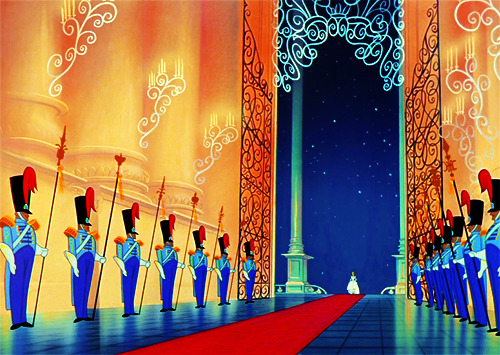

Probably less conscious are the implications behind the decision to have the dwarfs chase the Wicked Witch up a mountain and to her death (a beautiful, blurred fadeout of two buzzards circling down a chasm after her) before they’ve had a chance to discover that she’s fed Snow White a poison apple -– in fact, before they’ve bothered to inquire into Snow White’s welfare at all. Their vengeful pursuit is motivated by nothing but the forest animals’ mute warnings -– that is, by pure hysteria –- and the Witch’s evil has already been depicted so vivid and persuasively (to us, if not to them) that it is virtually impossible not to share their mob-like response as they goad her to her doom. Curiously, Snow White, who is visibly young enough to be the daughter of any of the dwarfs, acts like a mother towards them, a clever ploy permitting various subliminal satisfactions to children and parents alike. When the dwarfs need affection or guidance, she is maternal; when she needs to be avenged — or protected and preserved in a glass casket for the Prince’s arrival – they assume the parental role.


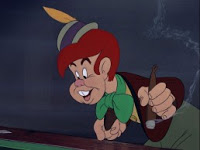
A sample instance of submerged propaganda can be seen in PINOCCHIO (1940). A quick survey of the various nationalities crowded together in the plot reveal a lower-class Italian (Stromboli) and two pseudo-English tricksters (the foxes) as villains (2); the “bad boy” who is Pinocchio’s naughty counterpart is a vulgar Cockney, as is the demonic coachman who transports them both to Pleasure Island; Geppetto, the “father,” is apparently Swis; Jiminy Cricket, whose attire and movements seem partially derived from the Chaplin tramp, appears to be a subtle blend of English and American attributes. Of the remaining speaking parts, only Pinocchio himself and the maternal fairy watching over him come across as “purely” American, and rather homogenized middle-class specimens at that.
The bebop crows in DUMBO (1946) are commonly cited as an example of Disney’s racism; but it should be kept in mind that this aspect becomes modified – if not eliminated – in foreign-dubbed versions, which are generally the only versions available in most non-English-speaking countries. (The same, of course, applies to many of the nationalities in PINOCCHIO.) In French, for instance, the crows come across as clochards as much as black stereotypes; the two caricatures become merged and confused.

If the racism of SONG OF THE SOUTH (1946) is infinitely more disturbing and consequential, this is because it bowdlerizes American history with such consummate mastery that its tactics go virtually unnoticed. Aided by the richly textured color photography of Gregg Toland and the frenetic emotional traumas of the plot, the film captures and reflects the consciousness of a child so adroitly that all of its submerged biases are made to ring like simple mythic truths. The physical pain of the cartoon sequences (e.g., Br’er Rabbit and Briar Patch) alternates with the emotional pain of the live-action (the departure of the boy’s father from the plantation corresponds to the recently-ended war, when many fathers were away): both lines culminate in the hysterical climax of the boy chasing across a pasture after Uncle Remus, departing on a wagon for Atlanta, before he is charged and gored by a killer bull.
Uncle Remus, who has assumed the parental role of the missing father, has been ordered to stop seeing the boy by the latter’s mother after telling him stories (the interpolated cartoons), which she thinks gets him into various kinds of mischief and trouble, but we know are conventional and respectable moral lessons that have the opposite effect. The impossibility and sheer absurdity of a black slave’s being, in effect, “fired,” sadly packing his meager possessions into a bandanna fixed on the end of a pole, and boarding a wagon for Atlanta, successfully eluded critics and audiences not only in 1946, but in 1972, when the film was reissued (to reap greater profits than ever before), and not because of any sleight-of-hand in the dialogue: quite simply, Uncle Remus’s status as a slave is ignored when it no longer suits the story’s purpose. (His status as a man is similarly held in check by a scene in the plantation kitchen, when it’s clearly established that he’s interested in the presiding mammy only because of her cooking.) He exists as a literal appendage to the boy’s ego — returning, in the last scene, to revive him from a coma — and is scaled down throughout the film to fit this emotional logic. (3) Needless to say, similar “improvements” in history abound in Disneyland and Disney World – executed with comparable skill, and usually received with the same lack of resistance.
(To be continued)


